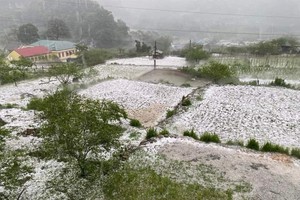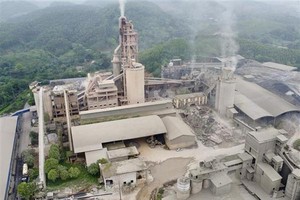Water level in the Hong River, which flows through the provinces of Lao Cai, Yen Bai, Phu Tho, Vinh Phuc and the capital city of Hanoi has dropped to its lowest level in a hundred years, as recorded on Jan. 25 ( third day of new lunar year ) by the National Centre for Hydro Meteorological Forecasting.
The prolonged dry season is said to be the reason for the drop in water levels so drastically that the bottom of the river bed can be seen, exposing even the foundation of the Long Bien Bridge in Hanoi.
Another reason could be the hydro dams like Hoa Binh, Son La, Tuyen Quang Thac Ba in upstream areas of the river which are accumulating water for storage, in case of drought.
Water levels in the Hong River, which runs through the northern province of Lao Cai and past Hanoi city, generally drop during February or March each year, but this year they have receded sooner and more drastically.
The drop in water level has led to traffic jams in the river, with boats forced to suspend operations, as many sections of the river are now too shallow to travel through. For instance, in the Vinh Thinh ferry port in the northern province of Vinh Phuc, water levels are about 600 metres from the shore and the managing board had to move the sand from the river bed so that vehicular traffic could drive along the riverbank.
The ticket fees of water transport along and across the Hong River are now one and a half times more than normal. Numerous ships, boats are rendered redundant now. This has led to a decrease in sand exploiting, pushing sand prices to exorbitant rates.
Officials say that the tide has ebbed because hydroelectric reservoirs in Tuyen Quang, Thac Ba and Hoa Binh are conserving water for the upcoming dry season and for use in agriculture in February. It is anticipated that from Feb. 1 until Feb. 9 the abovementioned hydroelectric reservoirs will release their reserve water.
























